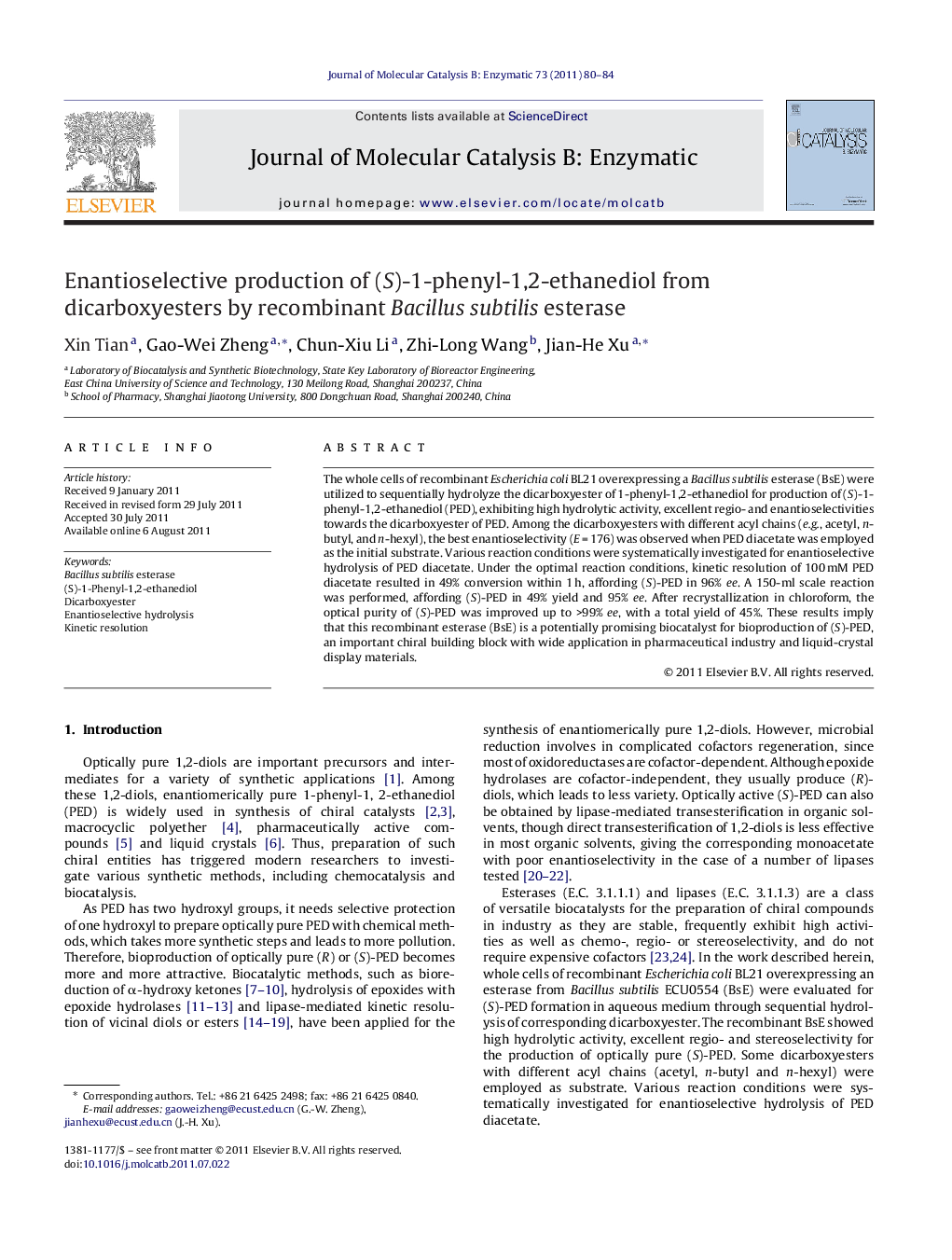| Article ID | Journal | Published Year | Pages | File Type |
|---|---|---|---|---|
| 70085 | Journal of Molecular Catalysis B: Enzymatic | 2011 | 5 Pages |
The whole cells of recombinant Escherichia coli BL21 overexpressing a Bacillus subtilis esterase (BsE) were utilized to sequentially hydrolyze the dicarboxyester of 1-phenyl-1,2-ethanediol for production of (S)-1-phenyl-1,2-ethanediol (PED), exhibiting high hydrolytic activity, excellent regio- and enantioselectivities towards the dicarboxyester of PED. Among the dicarboxyesters with different acyl chains (e.g., acetyl, n-butyl, and n-hexyl), the best enantioselectivity (E = 176) was observed when PED diacetate was employed as the initial substrate. Various reaction conditions were systematically investigated for enantioselective hydrolysis of PED diacetate. Under the optimal reaction conditions, kinetic resolution of 100 mM PED diacetate resulted in 49% conversion within 1 h, affording (S)-PED in 96% ee. A 150-ml scale reaction was performed, affording (S)-PED in 49% yield and 95% ee. After recrystallization in chloroform, the optical purity of (S)-PED was improved up to >99% ee, with a total yield of 45%. These results imply that this recombinant esterase (BsE) is a potentially promising biocatalyst for bioproduction of (S)-PED, an important chiral building block with wide application in pharmaceutical industry and liquid-crystal display materials.
Graphical abstractFigure optionsDownload full-size imageDownload as PowerPoint slideHighlights► A recombinant Bacillus subtilis esterase was producted (S)-1-phenyl-1,2-ethanediol. ► The BsE exhibited the best enantioselectivity (E = 176) towards diacetate of PED. ► The hydrolysis reaction gave a 49% conversion within 1 h, and (S)-PED in 96% ee. ► The BsE is a potentially promising biocatalyst for bioproduction of (S)-PED.
